Few people are aware of the tax incentives available to businesses in South Africa for solar PV installations.
Residential water heating is the single biggest residential electricity consumer.
Actual performance data from customers’ Elon Solar PV systems.
South Africa’s National Building Regulations and Building Standards Act requires compliance with a set of standards called SANS 10400. SANS 10400 has several parts, of which SANS 10400 Part XA deals with energy usage in buildings.
All new buildings constructed in South Africa have to comply with the National Building Regulations (in other words, with all parts of SANS 10400).

In the latest version of SANS 10400-XA, published in 2021, electrical resistance heating is defined as “electric current derived from the national electrical supply grid passed through a conductor to produce heat.”
How can one comply with Regulation XA2?
Various alternative water heating methods can be used to comply with Regulation XA2, including solar PV, solar thermal (the so-called ‘solar geysers’, heat pumps, natural gas, liquid petroleum gas, sustainable sourced timber and invasive vegetation, heat recovery and biogas.
Of particular interest to residential buildings is Regulation XA2, which states that:
“At least 50% (volume fraction) of the annual average hot water heating requirement shall be provided by means other than electrical resistance heating including but not limited to solar heating, heat pumps, heat recovery from other systems or processes and renewable combustible fuel.”
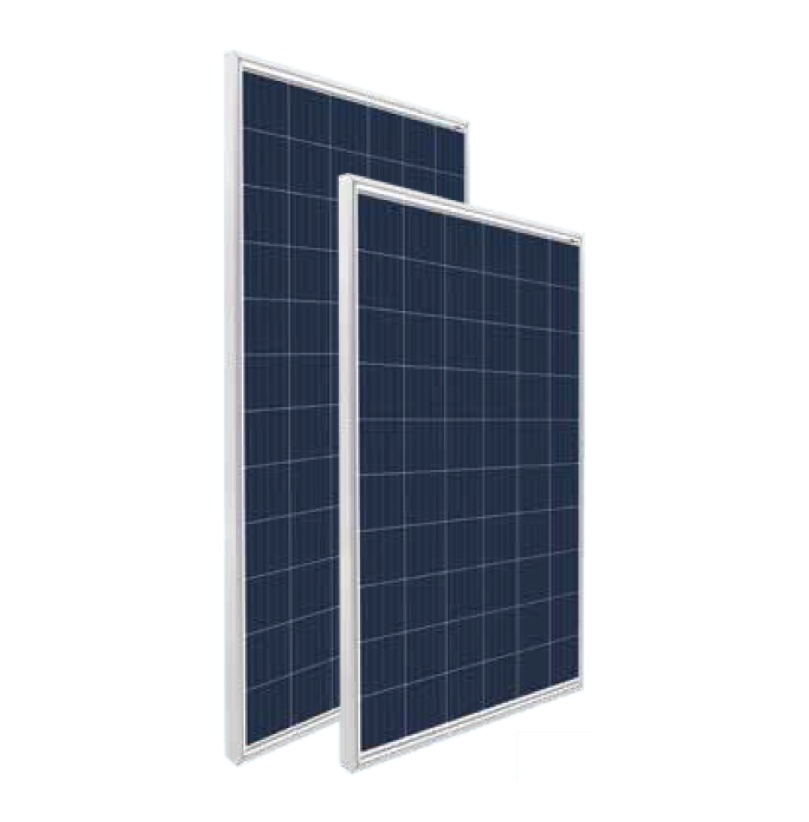
Converts photons from the sun into direct current (DC) electricity, which is used to power a heating element
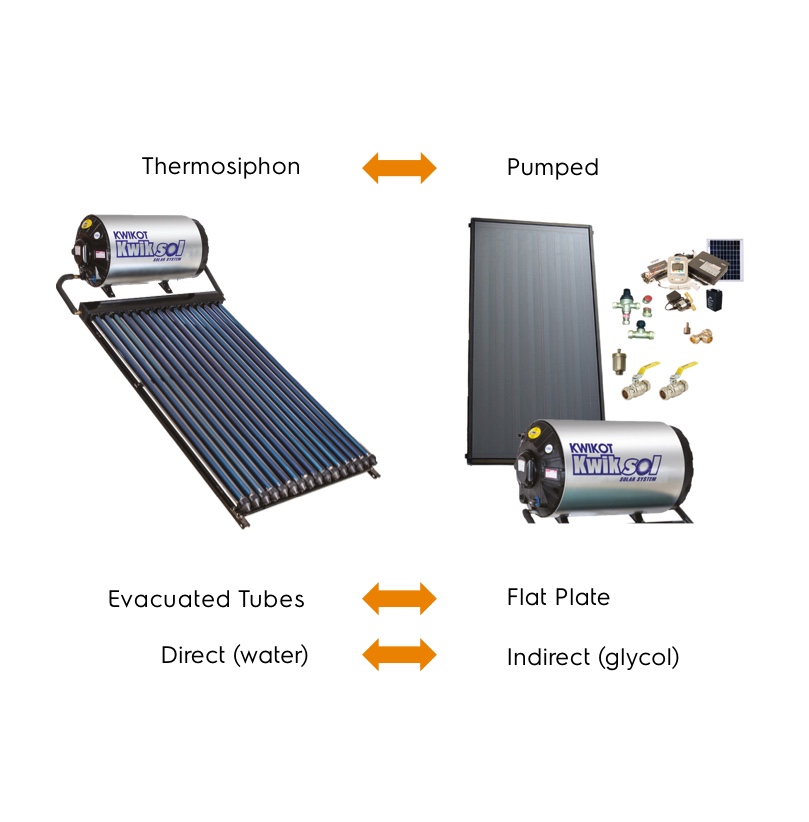
Captures heat from the sun in water or heat exchange fluid.
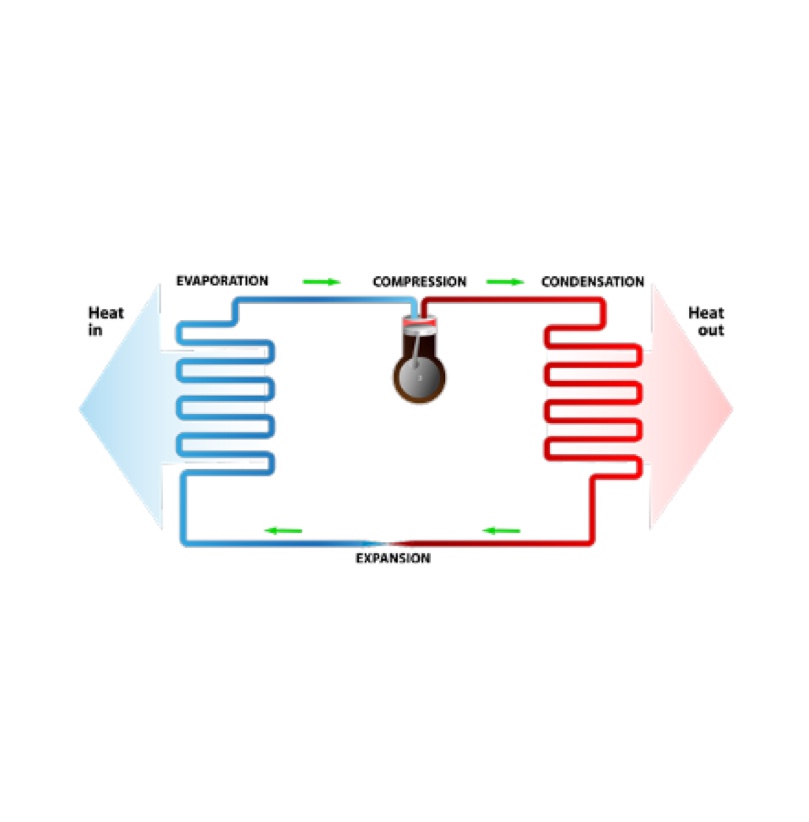
Few people are aware of the tax incentives available to businesses in South Africa for solar PV installations.
Section 12B of the Income Tax Act No. 58 of 1962 allows companies to accelerate the depreciation of the full cost of new solar PV installations as follows:
Solar PV installations on build-to-rent residential buildings are eligible for this tax benefit. This means that property owners can fully depreciate solar PV water heating installations (done for the purpose of compliance with SANS 10400-XA) in the first year. Effectively this is a 28% discount on solar PV water heating installations!
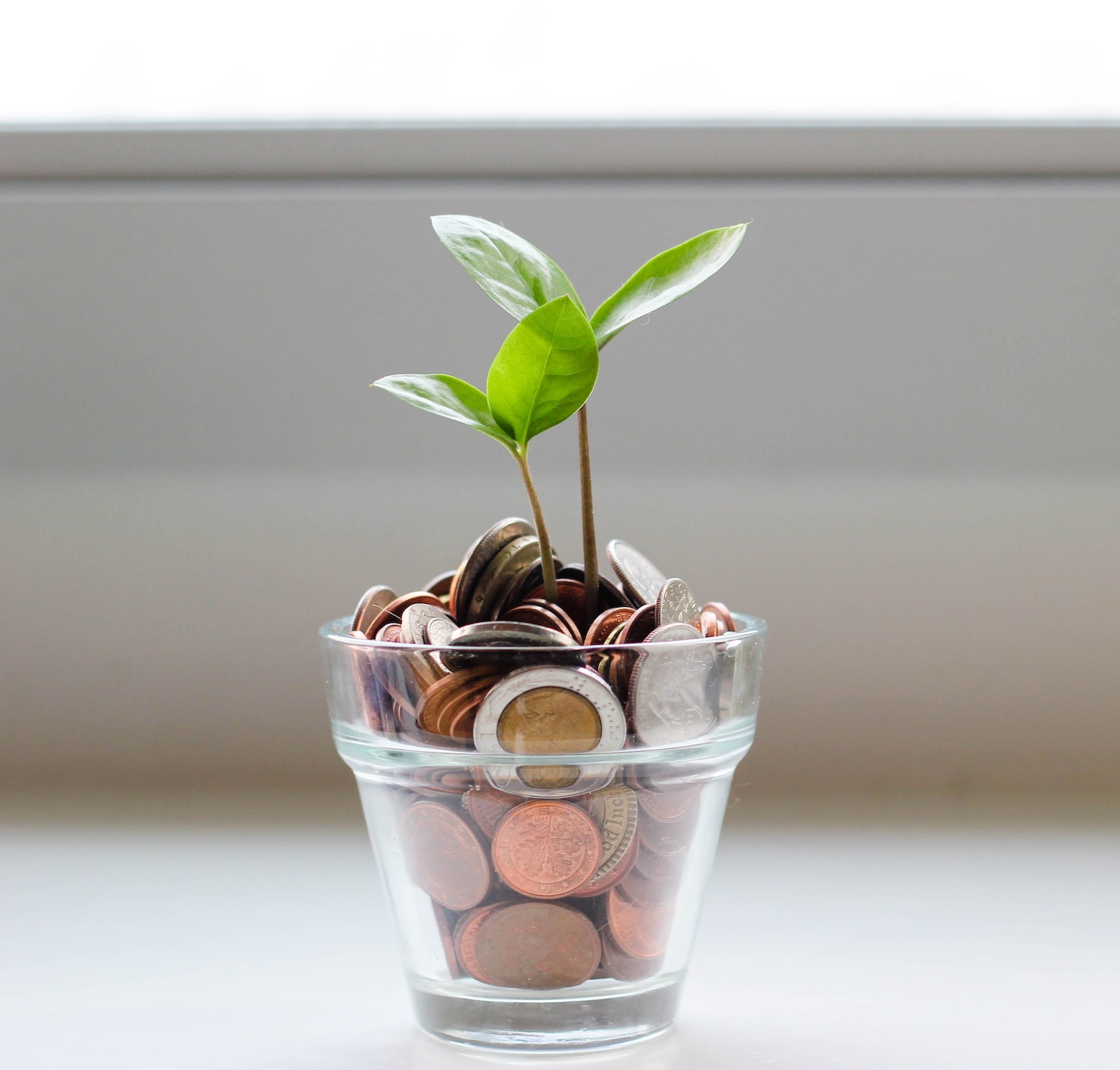
Just like for the green tax incentives, most people are unaware that South Africa has signed into law a carbon tax act in 2019, creating a carbon tax and offset regime.
Companies have to pay for polluting, and the tax is being phased in over a number of years, with the first phase ending in December 2022. The carbon tax in South Africa is currently around R127/ton carbon dioxide.
On the international markets, carbon is trading at about EUR80/ton (or about R1380/ton) as of February 2022.
With the Elon Smart Water Solution, build-to-rent property owners can now register their solar PV water heating installations as carbon offset projects and gain additional income
Companies can fully depreciate the cost of solar PV installations in the first year.
Companies can register their solar PV installations, meter the solar PV energy produced and sell the carbon credits on the SA or international markets
Most people don’t realise how much energy is required to heat water, since the geyser works automatically in the background and the water heating bill is not a separate item in the electricity bill. But residential water heating is the single biggest residential electricity consumer at about 40% of total household electricity use.
When you combine this with the fact that South Africa generates 87% of its electricity with coal, you end up with a very large national carbon footprint for water heating.
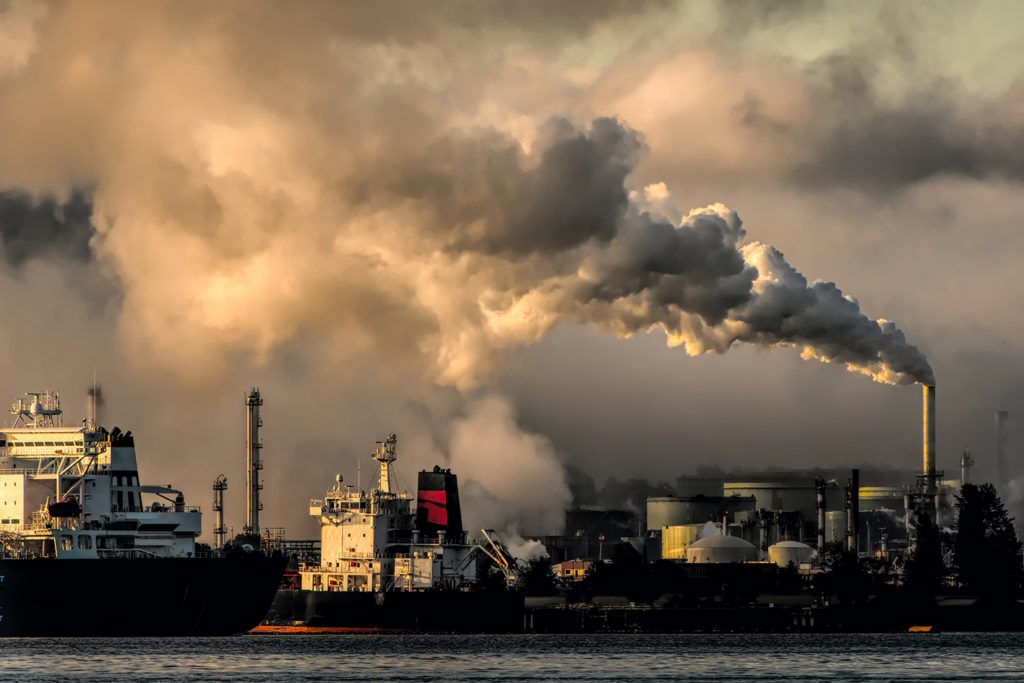
20 Mton CO2e per year
Whether your goal is reducing your electricity bill, maximising return on investment or going completely off-grid, the Elon Smart Water Solution’s plug-and-play solar PV capability can transform your electric geyser into a smart, renewable water heater.
Solar PV array size: 1.575 kWp Family size: 4 people Solar Fraction achieved: 52% of energy from the sun
When & Where: Pretoria, May 2017 (Winter)
Comments: With a system of less than 1.6 kWp for four people, over 50% of the family’s water heating energy was obtained from the sun in winter time.
 |  |
Solar PV array size: 1.5 kWp Family size: 2 people Solar Fraction achieved: 65% of energy from the sun
When & Where: Johannesburg, November to December 2017 (Summer)
Comments: Approximately two-thirds of this family’s water heating energy need was obtained from the sun.
 |  |
Solar PV array size: 1.8 kWp Family size: 1 person plus domestic worker Solar Fraction achieved: 99% of energy from the sun
When & Where: Cape Town, October 2020 to February 2021 (Summer)
Comments: All of this household’s water heating energy need was obtained from the sun.
 |  |
The size of the solar PV array (in other words, the number and power rating of solar PV panels on the roof) will directly impact the performance of the Elon. Additionally, time of year and location will also have an impact on system performance.
As can be seen from the graph below, payback period decreases as number of solar panels increases, and is also different for Johannesburg, Cape Town and Durban.
The reason that payback period improves (decreases) as number of solar panels increases, is because there are some fixed costs (such as engineering design & safety components) and some costs that do not scale linearly with array size (such as labour, wiring, mounting kit costs, etc.).
Note: payback period is also dependent on your normal hot water usage levels. If you use 50 litres hot water/day, the energy required to heat 50 litres/day is how much you can save
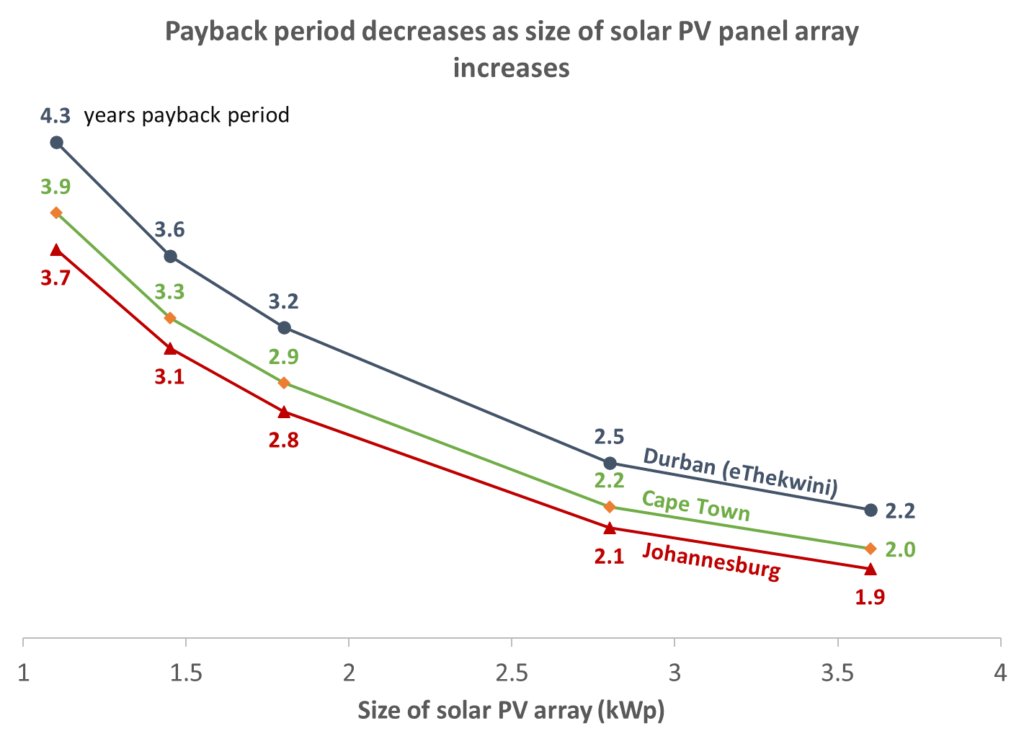
To compare different water heating options that have different initial (capital) cost, different lifespans and different operating & maintenance cost, a common approach used is the so-called Levelized Cost of Energy or LCOE.
This approach considers all these different factors to produce a single cost per unit of energy (kWh). This then enables a direct “apples with apples” comparison of different technologies and energy sources.
As can be seen from the chart below, Elon solar PV is the lowest cost option on a total lifetime cost basis. Electricity from Eskom or municipalities is the most expensive way to heat water.
(For more details on this analysis, see the “Levelized Cost of Energy” tab on this page.)
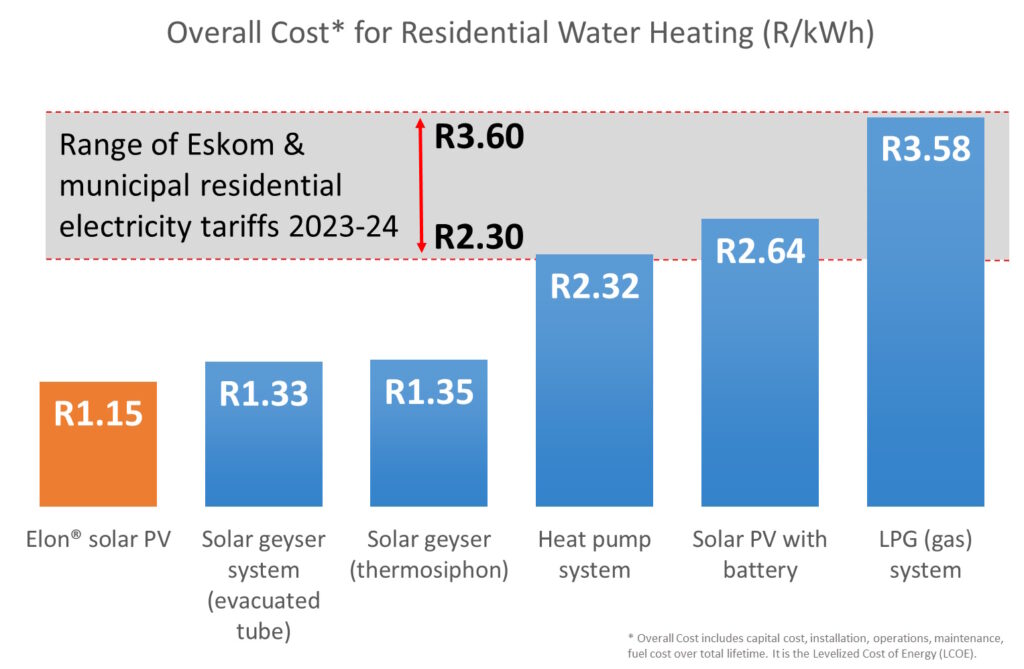
Installation of an Elon solar PV water heater with about 1 kW of solar PV in Cape Town will save about 39 tons of carbon dioxide over the system lifetime.
That’s equivalent to an average car driving 7 times around the earth!

Installation of 100 Elon solar PV water heaters with about 1 kW of solar PV each in Johannesburg will save about 4000 tons of carbon dioxide over the system lifetime.
That’s equivalent to an average car driving 69 times to the moon!

Contact us to learn more or to find out how we can join forces on this exciting journey.
+27 83 262 1424
Questions? We’ll get back to you on how to join our journey!
I want updates from Elon Smart Water (you can unsubscribe at any time)
By clicking submit, you consent to PowerOptimal storing and processing personal information.
Please read our Privacy Policy.
PowerOptimal and Elon Smart Water are committed to protecting and respecting your privacy.